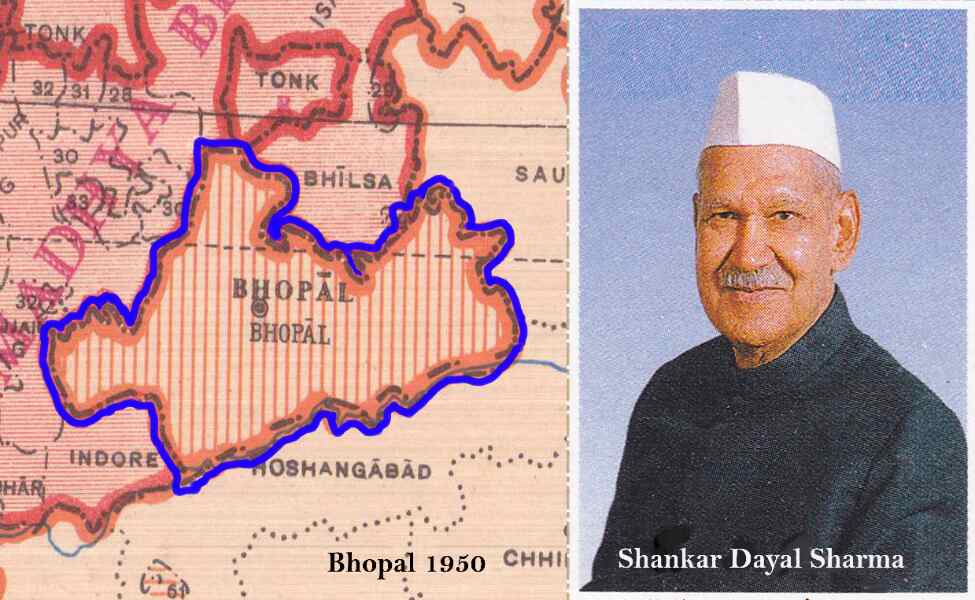Amalgamation with provinces
Integration of princely states was clubbed in Part-A, Part-B and Part-C states — the last of which saw the popular movement for merger with neighbouring provinces

After the settlement of privy purses, the States Ministry moved with great alacrity to integrate the princely states with existing provinces, or newly created unions of erstwhile princely states. Thus 216 of these were amalgamated with the neighbouring provinces of Assam, Bihar, Bombay, Madhya Pradesh (formerly Central Provinces and Berar), Madras, Orissa, Punjab, Uttar Pradesh (formerly the United Provinces), and West Bengal in the part A states, and the other 275 were included in Part B states. These were former princely states or unions of princely states, governed by a Rajpramukh, who was usually the ruler of a constituent state with an elected legislature. The Rajpramukh was appointed by the President of India. The eight Part-B states were Hyderabad, Jammu and Kashmir, Madhya Bharat, Mysore, Patiala and East Punjab States Union (PEPSU), Rajasthan, Saurashtra, and Travancore-Cochin.
The rest of the states Bhopal, Bilaspur, Himachal Pradesh (erstwhile Punjab Hill states), Kutch, Manipur, Tripura and Vindhya Pradesh (Bundelkhand and Bahgelkhand states), along with Ajmer Merwara, Coorg and Delhi (areas directly administered by the British) were constituted as Part-C states. These momentous changes were comparatively easier to implement under the Government of India Act 1935, which remained the Constitutional law of India till January 26, 1950. This Act gave overwhelming power and authority to the Central Government to bring about territorial adjustments.
Of these Vindhya Pradesh had first been constituted as a state, but on account of internal bickering, the experiment failed. This was the only example of the Union of states being reconstituted as a Chief Commissionerate. Specific provisions for their administration were laid down in Part-VIII of the Constitution. Initially, the administration had to be carried on by a Chief Commissioner, to be appointed by the President, but there was widespread resentment amongst the workers of the Praja Mandal with regard to the denial of 'popular participation', especially as those living in part-B and part-A states were directly responsible for their own affairs. YS Parmar from Himachal, Chaudhary Brahm Prakash from Delhi and SN Shukla from Vindhya Pradesh were at the forefront of the demand for responsible and elected legislatures. It led to the passage of the Governance of Part-C states Act of 1951, and each of them got a Chief Minister, albeit with limited powers. Vindhya Pradesh and Himachal were also elevated to the status of Lt Governor's province.
It must be mentioned that there was not much in common among the Part-C states, except that on account of their strategic importance, historical circumstances, or on the request of their rulers, these states were accorded this status. However, it was quite clear from the very beginning that this was an interim arrangement. In fact, popular movements in many of these states were supportive of merger with the neighbouring province. In the first elections held in Ajmer Merwara, Haribhau Upadhyaya from the Congress-led the popular ministry winning 20 of the 30 seats, and pressed for land reform legislations, besides campaigning for merger with the neighbouring state of Rajasthan. Elections in Bhopal saw the rise of Shankar Dayal Sharma, who was then the youngest Chief Minister in the country and later became the President of India. Sharma had been at the forefront of the popular agitation against the Nawab of Bhopal for his failure to sign the Instrument of Accession with India and had been arrested and detained for over eight months. Bilaspur was allowed to retain its identity for the Bhakra Nangal project laid in this state and was soon to be submerged in the dam area. As such the ruler MS Himmat Singh Ji's request to be allowed to be the first CC was accepted. It was merged into Himachal in 1954. As mentioned earlier, Himachal Pradesh saw the emergence of YS Parmar as a popular leader who was always at odds with the Chief Commissioner. The Chief Commissioner there was EP Moon, former ICS and the author of Divide and Quit, an account which castigated Mountbatten and the British Raj for their complete abdication of responsibility. EP Moon's proximity to Rajkumari Amrit Kaur, then the Union Health Minister and a confidante of Nehru was irksome to CM Parmar.
Kutch, Tripura and Manipur were border-states and hence considered to be very sensitive. Kutch was indeed one of the largest states of western India, with an area of 8,461 square miles, a population of nearly five lakhs and revenue of Rs 80 lakh. Menon writes "though Kutch was linguistically and culturally a part of Kathiawar, there were good reasons why we should keep the state directly under our control for some time to come, particularly as with the partition, Kutch had become a frontier state with Pakistan". Another important consideration was the direct involvement of the Centre in the establishment of the Kandla port, which required the building of a railway network and resettlement colonies for the Sindhis who had moved to India. A former Praja Mandal leader and activist Seth Rajmal Shah was the Chief Minister of the state till its eventual merger with Bombay after the SRC recommendations in 1956.
...to be continued
Views expressed are personal



